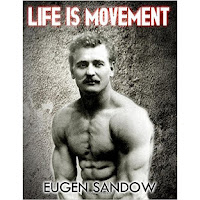" Nothing will work you as thoroughly as power rack training."
"I have never witnessed physical decline or defeat when a trainee incorporates power rack work into his training routine."
These two quotes are from "The Development of Physical Strength," by Anthony Ditillo, written in 1982. Power Rack Training has been around for a long time, and has been used by just about every serious lifter at one time or another. A Power Rack allows for the use of partial movements in complete safety. The heavy poundages that partials allow you to use will stimulate strength gains not only in the muscles, but also in the ligaments and tendons. In order to build great strength you must you must use heavy weights, and partial movements are a great way to utilize heavier poundages. Powerlifters, Olympic Weightlifters, and serious strength athletes from all walks of the Iron Game have benefited from using heavy partials.
What if you don't have access to a power rack? Most serious gyms, while few and far between, usually have at least one heavy-duty power rack. Even some of the "chain gyms" have a rack, although few of the clientele use it correctly. But in these challenging times, when many gyms have been forced to close, many lifters no longer have access to a power rack. Therefore, the use of partial rep training is out of the question, right?
The answer to the above question is a resounding "No!" There is a solution to every problem. As Clint Eastwood told us in "Heartbreak Ridge" the solution is simple: Improvise, adapt, and overcome.
A while back, while training with my friend, Steve Weiner, we did partial Trap Bar Deadlifts. The interesting part of this was that we didn't use his power rack. Instead, Steve had two large manhole covers ( over 200 Lbs. each) with 2" holes drilled into the center to fit onto an olympic bar. This was the first time I had tried partials with a trap bar, but it would not be the last. Incidentally, it was the first time I had ever used manhole covers as exercise equipment. I don't suppose that I will ever see them in any other gym. Mr. Weiner is one of the few for whom manhole covers are considered exercise plates. On an unrelated note, for any persons reading this who were raised in the City, I use the term "manhole covers" advisedly. "Sewer caps" is the vernacular used by city residents. My apologies for any confusion!
Since March of this year, I have done most of my training at home. Since I have neither a basement, nor a garage, I have had to become "creative" with my workouts. In a previous article, I wrote about the thick-handled trap bar that I purchased from eliteFTS. It is one of the best training investments I've made. It combines two great things: thick-bar training with a trap bar. However, lacking a power rack, as well as manhole covers, I couldn't do partials. But, again thanks to Steve, I found a solution to the problem. There is a way to do partial reps without a power rack, all in the comfort of my living room: Wagon Wheel Pulling Blocks. I recently purchased a pair from Titan Fitness. These plates weigh 45 Lbs. each, and are 26" in diameter, which means that the bar will be starting from just below the knee. Because of their height, they allow you to do partial Deadlifts, and other pulling movements. Shrugs are also much easier from the increased height. They can even be used for partial Bench Presses off the floor. I've only had these plates for a couple months, so I have only just begun to these plates to their fullest potential. In short, you can do a variety of power rack movements, with the exception of Squats, of course.
As for my own personal training, I am currently Deadlifting once every eight days. Obviously, this is not engraved in stone, as sometimes the interval between Deadlift workouts can be less, or more, than eight days. Depending on my work schedule ( which varies every week), or, more importantly, how I feel, being flexible plays a big part in training success. It is increasingly important to recover sufficiently between workouts as you get older. Even younger trainees can benefit from listening to their bodies when it comes to trainjjng frequency. Adequate recuperation is crucial for drug-free lifters.
The bane of drug-free trainees is overtraining. This is why so many people who try to follow the bogus routines of the so-called champions fall flat on their faces. If they don't overtrain physically, they will surely burn out mentally. Too much volume, and not enough recuperation between workouts have caused many beginners to lose interest and quit. Two, or at most three, full-body workouts per week are more than enough to get bigger and stronger.
If, for whatever reason, you are unable to get to the gym, there are options available to enable you to train at home. While there might have been shortages of home exercise equipment at one point, the general public doesn't like to be pointed in the direction of heavy workouts. There is good, heavy-duty equipment available out there. Combine that with a solid training routine, and a determination to succeed, and you will be able to get bigger and stronger in the face of adversity. And in the comfort of your home!












